What brake discs are (types, classification, benefits)
What brake discs are on your vehicle?
1.Solid (non-ventilated brake discs) 2.Ventilated discs 3.Discs with drilled holes 4.Disks with slots 5.Wavy discs 6.Carbon – ceramic discs
Vote
Results
The pros and cons of different designs of brake discs
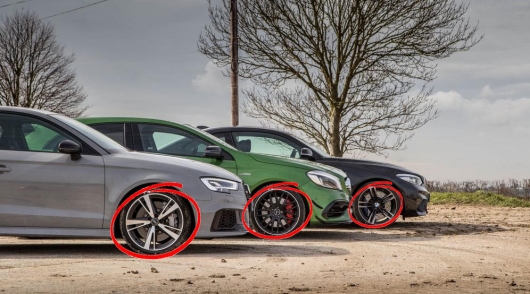
Every wondered what good ventilated disks, or what is the advantage of drilled rotors with holes in them? Allow us to explain…
We all know the basic function and operation of disc brakes. The caliper pushes one or more pads, pressing them to the disk, thereby causing friction and slowing the rotation of the shaft, which is attached to the brake rotor. But despite the fact that the operation of all brake systems are built on this single principle, used to work part time and depending on vehicle application, can vary significantly.
Vary can the brake pad material, there are many types of calipers – for-road car ones, for sports machines – the other hypercar for the third and so on. Various can even be brake discs.
So, the topic of today’s conversation will be the types and classification of brake disks and their differences:
Solid (non-vented brake disc)
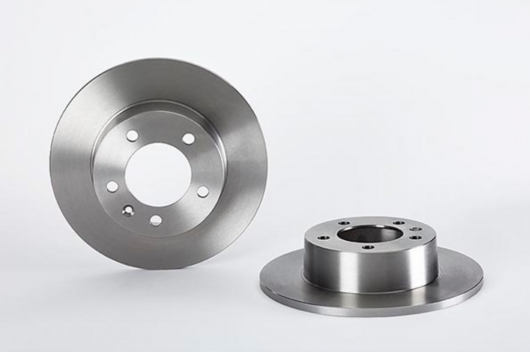
The simplest form of the rotor, which can buy. As the name implies, this part is made from a single piece of metal. Typically, the material is cast iron. Nothing remarkable – a simple design consisting of a homogeneous rotor and Central part of the disk. Cheap to produce, cheap for the purchase. There is something seriously wrong with these drives, but they are designed for use on old, underpowered and slow cars. They warmed up quickly and the heat is withdrawn slowly. That is not as effective as the following drives on our list that we would like to draw attention:
Ventilated disc
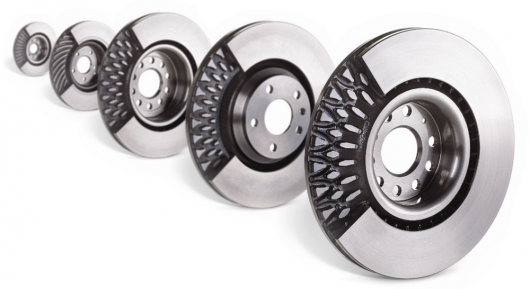
Probably the most popular type of disc used on modern cars. Its design consists of two piece rotors with spaced channels between them for cooling. The cunning scheme, hidden from the eyes, allows heat to dissipate, protecting the drive from overheating, cracking, twisting of the disk and increasing the lifetime of the pads.
Initially characterized by the presence of direct channels, the ventilated discs as the years have evolved to improve air flow. In the image above you can see the change of brake discs from Brembo: straight channels, curved channels with three different more complex type of pattern, with a more efficient distribution of the air flow.
Drilled discs

BMW M2 with drilled disks (left) next to model M240i with sports flat vented models
When brake pads are used under high load conditions, of which heat begins to exit Gaza and everywhere scattered debris dust sticking on the rotor disc. Is formed a thin layer, which degrades adhesion of the pads with the disc during operation, causing the braking performance decreases. Holes are drilled so that these gases had an exit, and with them, came out and abrasive dust. An additional advantage is the lower weight compared to a disk without holes. However, in this tuning there is a negative side – the strength of the disk is deteriorating.
It is also worth considering that the surface of the brake disc is used as a small radiator, so reducing the area of contact metal with the ambient air and reduce the cooling performance.
In addition, these holes can become points of tension that may lead to cracking of the cast iron during heavy braking.
You must have noticed that even in a sports car “drilled” discs becomes less. The reason for this is to improve the quality modern brake pads. With their active use is formed not so much gas as their predecessors, in connection with the need for “drilling” declined.
So, on the road, in normal use you probably won’t face such problems, it is so beautiful drives in the hole remains can sometimes be seen on a modern sports car, where they will surely look fantastic behind large alloy wheels. Plus, if the disc rotors are drilled at the factory at the factory, they will be sturdy enough to precisely avoid cracking.
Disk with slots
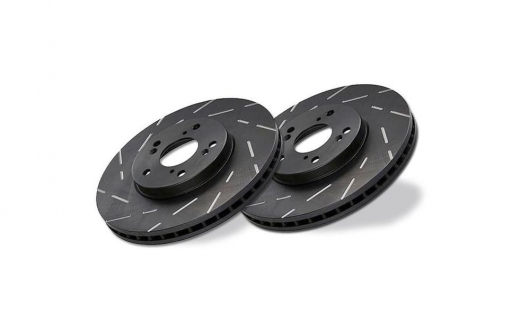
These slots on a disk are trying to solve the same problem with the exhaust-gas, only different. Slots or grooves on the surface of a disk allow gas to promptly discharged, but such a design has other benefits.
Scratching at the surface of the brake pad the edges of the recesses is able to clean the braking surface from dirt while also increasing engagement in contact with the edges of the furrows. The downside of course is the active wear. And finally, just like drilled discs, they look just beautiful.

The design of the groove can vary considerably, one of the most unique grooves you can call “J”-shaped hooks (pictured above), which are designed for the removal of particulates and exhaust gases with the minimum vibration of the disc during braking. At the same time, they look even better.
Dimpled (with grooves)
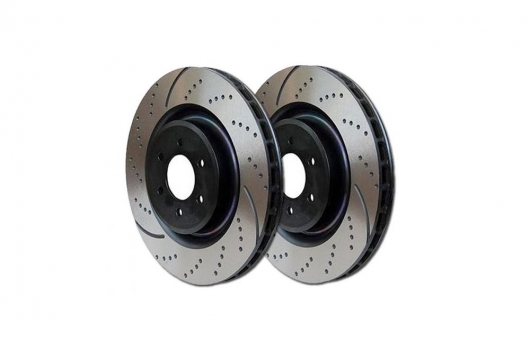
That’s option number three, allow these obnoxious gases to evaporate. Surface drilling of the material from the disc, which leaves the structural integrity of the disk intact, at the same time allowing the gases and the abrasive pad with a place for the challenge.
Some disk manufacturers combine the grooves with the grooves. How it improves cleaning efficiency, hard to say. Just another variant of the use of technology.
Wavy brake disc
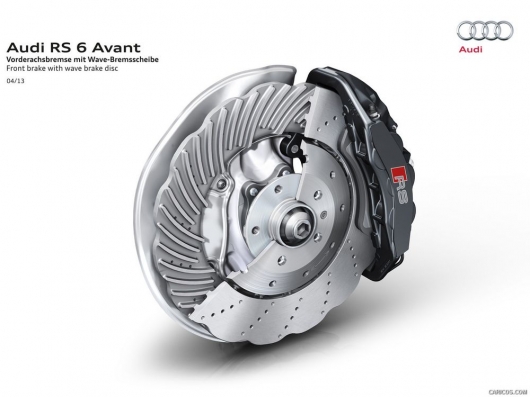
Slit drilled wave disc showing the internal cooling channels
Wavy long drives stuck in the world of motorcycles, but seeking to benefit from its acquisition of Ducati, Audi began to introduce the concept into some of its most fast cars only a few years ago. Reduction in weight (less material used) and better heat sink – main advantages of the technology. As with many projects, which we have just spoken, the appearance is almost certainly a factor for the choice of design by the manufacturer and the end user.
Carbon – ceramic disc
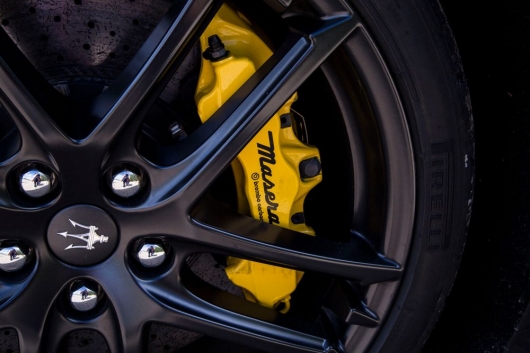
The most extreme way of controlling the temperature of the brake discs – the choice for installing carbon – ceramic rotors. Hot drive heats to a high temperature pads, and this leads to an even greater number of gases, particulates and reduce the quality of braking. So why not find other material instead of cast iron?
Brake discs made of ceramics and carbon are much more resistant to heat and less likely that they will “float” or deform under heavy use. So they will live longer. As a bonus they are usually much lighter than their iron counterparts. Which reduces unsprung weight and improves handling.
But there is a reason why their use is still not widespread: the cost. Carbon brakes are much more expensive to manufacture. The average set of brake discs can cost 400 thousand rubles! For older vehicles this is hardly suitable.
In addition, you will need brake pads with special compound. Guess what? They also cost a lot of money. In General, the option is only for very expensive sports cars.
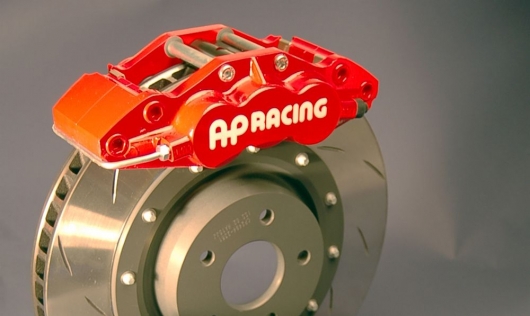
You have recently upgraded your brakes? What drives you choose and why? Share your opinion in the voting is up!
